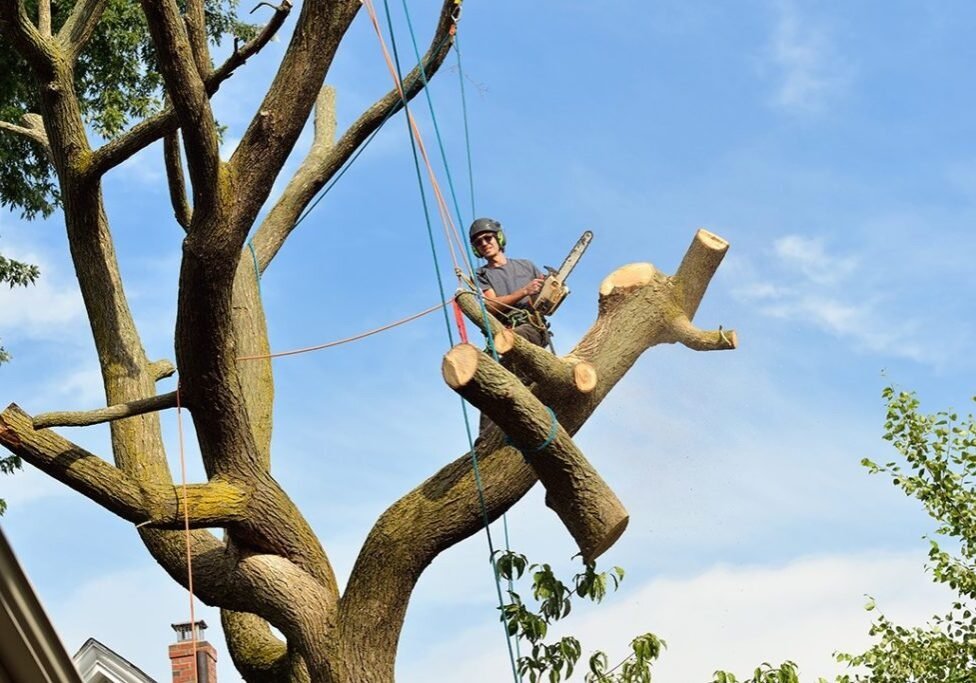
Navigating Tree Removal: Insights and Strategies for Success
Table of Contents
ToggleUnderstanding the Importance of Tree Removal
Why Tree Removal is Necessary
Trees, with their majestic presence, provide numerous benefits to our environment and wellbeing. However, there are instances where their continued presence can pose significant risks. Diseased, damaged, or structurally compromised trees present hazards that endanger lives and property, especially during storms or adverse weather conditions. Moreover, overcrowded or invasive species can outcompete native vegetation, disrupting ecosystems and reducing biodiversity.
Environmental Impact of Tree Removal
While the decision to remove a tree may seem counterintuitive to environmental conservation, responsible tree removal practices can mitigate negative impacts and even contribute to ecological restoration. By recycling wood chips and repurposing timber, we can minimise waste and promote sustainable resource management. Additionally, replanting initiatives ensure the continuity of green spaces and mitigate the carbon footprint associated with tree removal.
The Process of Tree Removal
Initial Assessment and Planning
Before undertaking tree removal, a thorough assessment of the tree’s health and structural integrity is essential. Certified arborists evaluate factors such as decay, disease, and structural weaknesses to determine the most appropriate removal technique. Additionally, obtaining permits from local authorities ensures compliance with regulations and facilitates a smooth removal process.
Tree Removal Techniques
Tree removal techniques vary depending on factors such as the tree’s size, location, and surrounding structures. In open areas, felling may be employed, involving the controlled descent of the tree in one piece. Conversely, rigging techniques are utilised in confined spaces or near structures, where the tree is dismantled in sections using ropes and pulleys. Specialised equipment such as chainsaws, cranes, and aerial lifts enable efficient and safe removal operations.
Factors Influencing Tree Removal Cost
Tree Size and Type
The size and species of the tree significantly influence the cost of removal. Larger trees with extensive branches or complex root systems require more labour and specialised equipment for removal. Additionally, certain tree species may be more challenging to remove due to their density or wood hardness.
Accessibility and Location
The accessibility of the tree removal site plays a crucial role in determining costs. Trees located in remote or difficult-to-access areas may require additional equipment and manpower, increasing overall project expenses. Urban settings pose logistical challenges such as traffic management and proximity to buildings, impacting the cost of tree removal.
Additional Services Required
In addition to tree removal, supplementary services such as stump grinding and debris removal may be necessary to complete the project. These additional tasks incur additional costs and should be factored into the overall budgeting process.
Safety Measures During Tree Removal
Protective Gear for Workers
Ensuring the safety of workers involved in tree removal operations is paramount. Personal protective equipment (PPE) such as helmets, gloves, eye protection, and chainsaw chaps protect against potential hazards such as falling debris and equipment malfunction.
Securing the Work Area
Prior to commencing tree removal, the work area must be secured to prevent unauthorised access and ensure the safety of bystanders. Clear signage, barricades, and designated entry points notify individuals of the ongoing operation and minimise the risk of accidents.
Potential Hazards to Avoid
Identification and mitigation of potential hazards are critical aspects of safety planning. Power lines, nearby structures, and underground utilities pose significant risks during tree removal operations. Trained professionals with expertise in hazard assessment implement measures to mitigate these risks and ensure the safety of workers and bystanders.
Aftercare and Replanting Strategies
Proper Disposal of Removed Trees
Following tree removal, proper disposal of the tree and associated debris is essential to maintain a clean and orderly site. Recycling wood chips for mulch or composting organic matter minimises waste and enhances soil health. Timber from removed trees can be repurposed for construction or woodworking projects, further reducing environmental impact.
Replanting and Landscaping Considerations
Replanting initiatives are integral to preserving green spaces and restoring ecosystem balance. Selecting native tree species that are well-adapted to the local climate and soil conditions enhances biodiversity and promotes ecological resilience. Strategic landscaping and planting designs can also improve property aesthetics and enhance property value.
Routine Maintenance to Prevent Future Issues
Regular maintenance is key to ensuring the long-term health and vitality of newly planted trees. Pruning, watering, and pest management practices should be implemented to promote healthy growth and mitigate potential issues. By investing in routine maintenance, property owners can enjoy the benefits of lush greenery while minimising future tree-related problems.
Originally from the U.S, Rana Tarakji is an SEO Analyst, the founder of One SEO, a multinational link building company, and the author of “Off-site SEO Guide: A Hands-on SEO Tutorial for Beginners & Dummies”, and a web content specialist who now lives in Beirut, Lebanon. Rana’s work has been published in many print and online magazines and newspapers, such as Entrepreneur, Life Hacker, Upwork, Christian Today, and many more.






